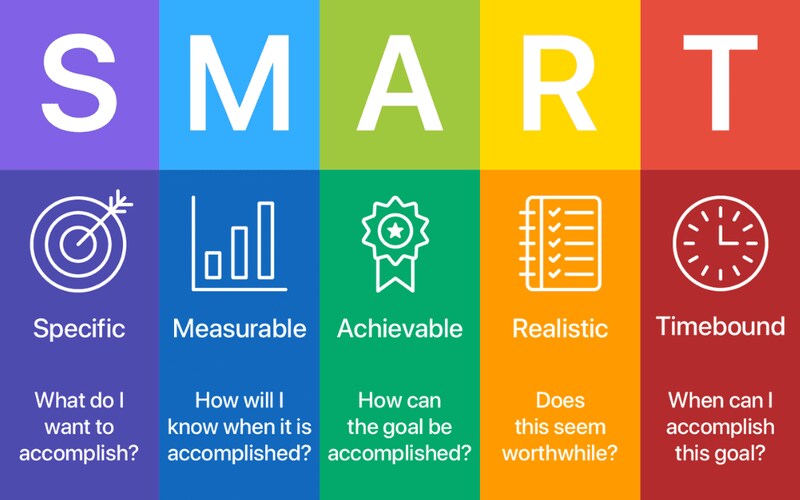Setting Effective Fitness Goals for Health Improvement
Advertisement
Setting aims for fitness is an important move in improving total health and wellness. SMART fitness targets, which are specific, measurable, achievable, related to your goal, and timely, offer a distinct structure that can support people in making practical and workable goals. By paying attention to these principles, people can organize their path toward physical fitness in such a manner that supports regularity and fosters advancement. This article will investigate different parts of SMART fitness objectives and their ability to result in important health enhancements.
Understanding SMART Fitness Goals

SMART is a short form that works as a direction for establishing efficient fitness targets. Every element of this abbreviation has an important part in making sure that aims to encourage accomplishment. Precise goals give a clear explanation of what someone wants to accomplish, offering clarity and concentration. Goals that can be measured give people the ability to monitor their progress and it helps them stay motivated. Goals that are possible consider one's situation, establishing a practical way forward. Relevant goals link fitness desires with bigger health aims, making sure they match individual values. Finally, goals with time limits give a deadline which creates an urgent feeling that can lead to dedication and regularity.
- Accountability: Share your goals with friends or family to increase commitment.
- Flexibility: Be prepared to adjust goals as circumstances change to maintain relevance.
Benefits of Specificity in Goals
Saying clearly what you want to achieve in fitness can greatly improve your chances of success. Instead of unclear aims such as "become fit", a clear goal could be, "I will run a 5k race within the next three months". This kind of clarity helps people see their target more clearly and it becomes easier for them to come up with an effective plan. Also, having precise goals reduces confusion and lets individuals set their priorities right by focusing on things that are important for improving health.
- Visualization: Consider using vision boards to reinforce your specific goals.
- Documentation: Keep a journal to track your journey and any changes to your goals.
The Importance of Measurable Goals
Goals that can be measured are very important for checking progress. When people can measure their success, it helps them to keep motivated more easily. To give an example, e.if a person's goal is to lose ten pounds within two months, the process of keeping track of weight loss each week gives real proof of advancement. This measuring gives the chance to modify the fitness scheme if required, stimulating constant enhancement. Quantifiable targets also assist in honoring little wins during the journey, strengthening good conduct and dedication toward healthy goals.
- Tools: Consider fitness apps or wearable devices to help track progress.
- Feedback: Regularly evaluate your metrics to identify areas for improvement.
Achievability and Realism in Fitness Goals
Making practical fitness targets is necessary to prevent emotions of disappointment and letdown. It's vital to push oneself, but having aims that are overly demanding can result in exhaustion and lack of motivation. An individual who has never run couldn't set a target to finish a marathon within one month. A better target can be to start with a distance that is easy to handle and slowly increase it as time goes by. This method not only makes people feel they have achieved something but also helps them gain confidence to aim for constant progress in their journey towards fitness.
- Incremental Steps: Break larger goals into smaller, manageable milestones.
- Consultation: Seek advice from fitness professionals to ensure goals are realistic.
Relevance to Personal Health Objectives

Fitness aims must be in harmony with a person's wider health dreams. This correspondence makes sure that the energy used to reach these objectives is significant and influential. Say, a person whose main goal is boosting heart health could concentrate on activities like running or biking, while another individual wishing to increase overall power might give precedence to weightlifting exercises. When people set important goals, it helps them to keep up their motivation. They know that what they are doing is adding towards improving their health in the future.
- Alignment: Regularly reassess your goals to ensure they align with changing health aspirations.
- Personalization: Tailor your fitness plan to your interests for greater engagement.
Time Constraints and Commitment
Goals set within a specific timeframe bring about an urgency that can greatly increase dedication. If there are no time limits, chances of delaying tasks could emerge and this may disrupt even the most well-thought-out plans. By setting a definite period to reach fitness goals, people can formulate a structured method that promotes discipline and regularity. If you set a certain date to participate in a fitness event or aim to finish a program, these time limits can aid in keeping attention and motivation.
- Deadlines: Set short-term deadlines to create urgency and maintain focus.
- Review: Regularly check your timeline and adjust as necessary to stay on track.
Implementing SMART Goals in Daily Life
To achieve SMART fitness objectives, people can initiate by evaluating their present physical condition and health ambitions. Building a comprehensive program that highlights distinct aims with consideration to measurable, attainable, pertinent, and time-related standards is very important. Including routine progress evaluations could sustain enthusiasm and permit modifications when necessary. If a person engages in group activities or finds an encouraging community, it may help them to remain responsible. Making these objectives part of everyday life can help people develop long-lasting habits for better health over time.
- Community Support: Join fitness groups or online forums for shared motivation.
- Consistency: Establish a routine that incorporates your fitness goals into daily life.
Conclusion
To summarize, embracing SMART fitness objectives can be a significant method for people looking to improve their health and wellness. These goals should be specific, measurable, achievable, relevant, and time-bound so that one can form an organized and efficient route towards fitness which stimulates progress as well as motivation. Anyone who plans meticulously while sticking to these principles could make substantial advancements toward accomplishing their aims of improving health hence fostering a healthier way of life.
Advertisement












